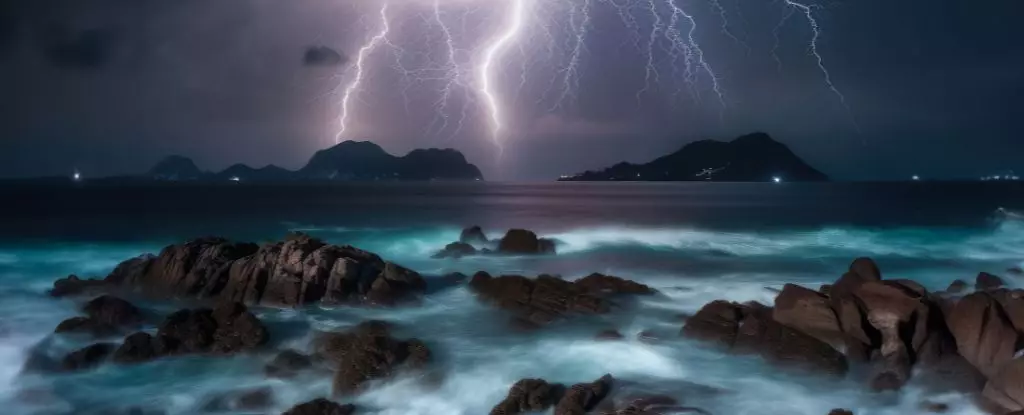In a captivating twist on the age-old question of how life began, a recent study from Stanford University unveils a groundbreaking phenomenon aptly named ‘microlightning.’ This term describes a highly controlled form of electrical discharge occurring among charged microdroplets of water, which could catalyze the formation of organic compounds essential for life. Far removed from the conventional perception molded by the revered Miller-Urey experiment of 1952, the idea that life’s building blocks emerged gently in the embrace of ocean mists rather than through violent electrical storms invites intriguing philosophical and scientific debates.
The Miller-Urey experiments have long been touted as ground zero for understanding the complex chemistry that underpins life. By simulating the conditions of early Earth with basic elements like methane and ammonia, Stanley Miller made history by demonstrating that applying an electric spark could synthesize amino acids. However, the assumptions surrounding those experiments—primarily that thunderous storms provided the necessary energy—might need reexamination. The recent findings challenge not only this assumption but also enrich our inquiry into life’s genesis.
The Power of Microlightning
At the heart of this study is the idea that microlightning, regardless of its diminutive scale, can unleash a substantial amount of energy from the ambient atmosphere in which these water microdroplets reside. Researchers, led by chemist Richard Zare, argue that even these minute electrical discharges can facilitate the crucial bonding of carbon and nitrogen, fostering the emergence of larger organic compounds. It follows that our understanding of life’s origins may considerably expand, possibly unveiling new avenues for synthesizing the molecules that form proteins and DNA.
What is particularly striking is the implication that life’s primordial ingredients could come together in a variety of environments beyond Earth—wherever water interacts with specific gases. The prospect that our extraterrestrial neighbors could share this microscopic alchemy generates a sense of wonder about the universality of life itself. Imagine alien worlds where microlightning sparks to life under alien conditions, nurturing the foundations of life that we perhaps have yet to encounter.
From Ocean Depths to Cosmic Shores
The implications of this research transcend the Earth-centric view that has long dominated the discussion about life’s origins, shifting our focus toward oceanic environments’ gentle turbulence. Water sprays colliding with stones or splashing into crevices could be the unsung heroes in the saga of life’s evolution, offering a plethora of chemical interactions that may have facilitated life’s inception long before organisms took shape.
In the grand tapestry of our planet’s past, we are invited to consider the latent potential inherent in every droplet of water. The hypothesis that life might arise wherever conditions permit the formation of these vital compounds pushes us to rethink not only our planet’s legacy but the prospect of life beyond it. The microlightning phenomenon opens up new avenues for exploration, a reminder that the answers to life’s deepest riddles may be lurking within the mist.
Rethinking Our Posture Toward Nature’s Processes
As an advocate for a more interconnected worldview, the unveiling of microlightning serves as a powerful call to recognize the orchestration of natural processes. Rather than seeing life’s origins as a moment defined by catastrophic events, we should begin adopting a mindset that appreciates the quiet yet relentless processes occurring throughout ecosystems. Nature, in all its forms, often converges upon the delicate balance of energy and chemistry, leading us to appreciate that life might emerge naturally wherever the conditions allow.
Moreover, this research invites us to reconsider our approach toward environmental preservation. In our ever-accelerated quest for technological advancement, we must remain vigilant about maintaining the fragile ecosystems that cradle these extraordinary processes. Innovations like microlightning remind us that life is often ingrained in natural mechanisms that are easily overlooked. To safeguard our future and the potential for life beyond Earth, we should prioritize the understanding and protection of these subtler yet palpable facets of nature.
The microlightning phenomenon presents a thought-provoking paradigm shift in our understanding of life’s origins. As we explore these critical insights, we expand our imagination for what life could be—on Earth and beyond.



Leave a Reply